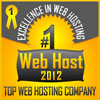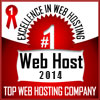VodaHost knows that the intricate nature of the Windows operating system means major differences in hosting services, dependent upon the class of site package you select.
Choosing a virtual or shared hosting option will mean that you will have highly compartmentalized options and no access or control over the operating system itself. Shared hosting on the Windows platform acts to bundle different services together, typically unified through a control panel interface. No access to the operating system means that consumers are not able to deploy their own applications. Instead, users can only access hosting tools through control panel or FTP interfaces.
Normally, services that are bundled include ASP.Net components, PHP, Perl, server-side XML, and unique CGI-BIN directories for scripting. Most shared hosting operations will grant database connections to SQL applications, and separate disk space for SQL databases.
From the end-user’s client perspective, the most advanced shared Windows hosting packages support multiple iterations of FrontPage (from 97 to 2005), and integration with Visual Studio 6.0/.Net, Macromedia Dreamweaver, NetObjects Fusion and Macromedia Flash.
While end-users are able to interface with these products from their client computers, they are not able to tweak the application configurations of the server. In order to be able to change, install, update and upgrade applications, an end-user would have to lease a dedicated server.
An unmanaged dedicated server will permit the consumer to make any specific adjustment to the operation system, or deploy any application. The user is able to achieve full graphical access to their Windows services by using terminal services. Terminal Server, a plug-in native to Windows 2003 Server deployments, lets consumers deliver Windows-based applications, or the Windows desktop itself, to virtually any computing device, including those that cannot run Windows, over the Internet.
Terminal Server can enhance software deployment capabilities for a variety of scenarios that remain difficult to solve using traditional application distribution technologies. When users run an application on Terminal Server, the application execution takes place on the server, and only keyboard, mouse and display information is transmitted over the network. Users see only their own individual sessions, which are managed transparently by the server operating system, and remain independent of any other client session.
Via Windows Terminal Server, consumers can also obtain full administrative access to their dedicated server and can install and deploy any software they deem necessary upon it. The consumer can pull up their server’s desktop display as if the machine was sitting on their own desk, though the reality might be that the server is actually in a data center half a continent away.
With such power, a consumer can configure their server’s Internet settings, including DNS and FTP. Full access also allows the user to configure the Web server to his or her own specifications. The ability to install and run any software that you deem necessary allows for the deployment of unique SMTP/POP server software to accounting packages, stats servers and productivity software.
The main challenge, of course, is attempting to install these packages from far away. Often, co-ordination is required between the host and customer if a software package needs to be installed via the server’s CD-ROM. Smaller software packages can always be uploaded by way of FTP and installed.
VodaHost web hosting
Your Website People!









